We looked at The Catalan on Tuesday and today we are delving into the new Chessable course on the opening to see what Grandmaster Srinath Narayanan recommends against two popular Black defenses.
Lifetime Repertoires: The Catalan covers everything a player with the white pieces needs to be able to out together a very strong repertoire based on 1.d4 and 2.c4.
Battling the Slav Defense
The Slav Defense (1.d4 d5 2.c4 c6) is not only popular but is also an extremely tough nut to crack. It has been trendy for some time to recommend the Exchange Variation for White (3.cxd5 cxd5), but not everybody likes such early symmetry when they are playing for a win.
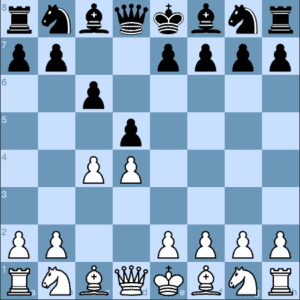
The Slav Defense
I was intrigued to see which direction this new course would take.
After the standard moves 1.d4 d5 2.c4 c6 3.Nc3 Nf6, Grandmaster Narayanan advocates keeping White’s game in Catalan territory with 4.g3.
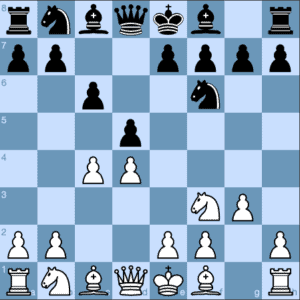
As it says in the course: ‘A very interesting and solid system which is quite underestimated in my opinion, like many good things. This option isn’t even mentioned in the Wikipedia article about the Slav Defense!’
It is much more common to utilise the fianchetto option after first playing 4.Qb3 or 4.Qc2, defending the c-pawn.
Black now has various options, all of which are covered in the course. I wanted to know what would happen if Black called White’s bluff and captured the pawn, and here is the answer.
4…Bf5
All Slav players dream of such an easy development for this bishop.
5.Nc3 dxc4
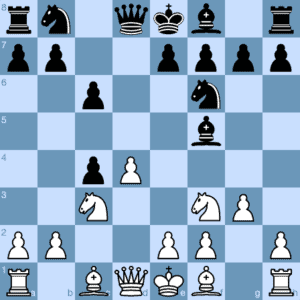
‘A common idea in the Slav defence is to take the c4-pawn and try to defend. However, in this particular position, this is not such a good idea.’
Key Differences
There are some key differences in this variation, as compared to other Slav lines – and one of them is the direct result of having played 4.g3.
‘Here with the White pawn already on g3, White can get Bf4 in with a tempo against …Qc7 whenever Black plays it. This doesn’t allow Black to get …e5 which is an important freeing move. Getting his Bishop to f5, in comparison is a poor trade-off.’
6.Ne5 Nbd7
7.Nxc4
‘White has regained the pawn, whilst retaining excellent centre control. White usually doesn’t manage to achieve this in the Slav mainlines.’
Fast forward a few moves and we find White is already developing a commanding position.
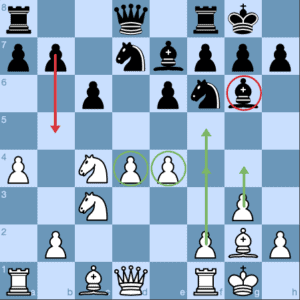
It turns out the ‘ideal’ development for Black’s queen’s bishop wasn’t the perfect dream after all.
‘White has a comfortable and clear edge with his robust centre. One of the key strategic problems for Black is the placement of his g6-Bishop. The Bishop is well-restricted by the White pawns and can be further harassed by f4/f5 or restricted by g4/f3.’
Battling the Benko Gambit
The next opening I wanted to check was the Benko Gambit.
This arises after 1.d4 Nf6 2.c4 c5 3.d5 b5.
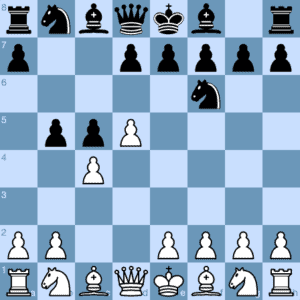
The Benko Gambit
Black offers a pawn sacrifice in return for open lines on the queenside and fast development. White needs to be careful both tactically and positionally.
It is interesting to see that Grandmaster Narayanan opts to sail down the main line of the opening. This involves White accepting the gambit pawn with 5.cxb5 a6 6.bxa6 Bxa6 and then accepting a floating king after 7.Nc3 d6 8.e4 Bxf1 9.Kxf1. The king heads to g2 after 9….g6 10.g3.
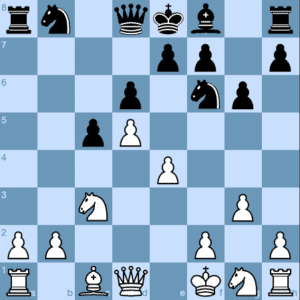
It is easy to see how Black will be able to attack down the a- and b-files with the rooks and the queen. How should White arrange his forces in anticipation of Black’s pressure?
The Key Position
The course recommends heading for this position.
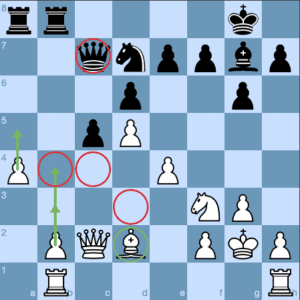 ‘There are many games from this position and White has an incredible score from here. I would highly recommend you go through as many games as possible from here as this position is very likely to occur in your game if your opponent plays Benko Gambit and you follow this repertoire.
‘There are many games from this position and White has an incredible score from here. I would highly recommend you go through as many games as possible from here as this position is very likely to occur in your game if your opponent plays Benko Gambit and you follow this repertoire.
White is looking to break with b4, making use of the pin on the c-file. If Black puts pressure on the a4-pawn, the White pawn is safe on a5.’
It is quite a while since I saw a book or a course recommend that White should play thus way and it will be interesting to see if starts a new trend. The course is based on heavy-duty options for White and players with Black are definitely going to find themselves under pressure if they do not do their own homework.
Chessable Course
Our brand new Chessable on The Catalan, by Grandmaster Srinath Narayanan, is now available.
There is also a Short and Sweet version of the course.








